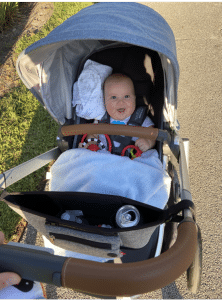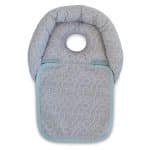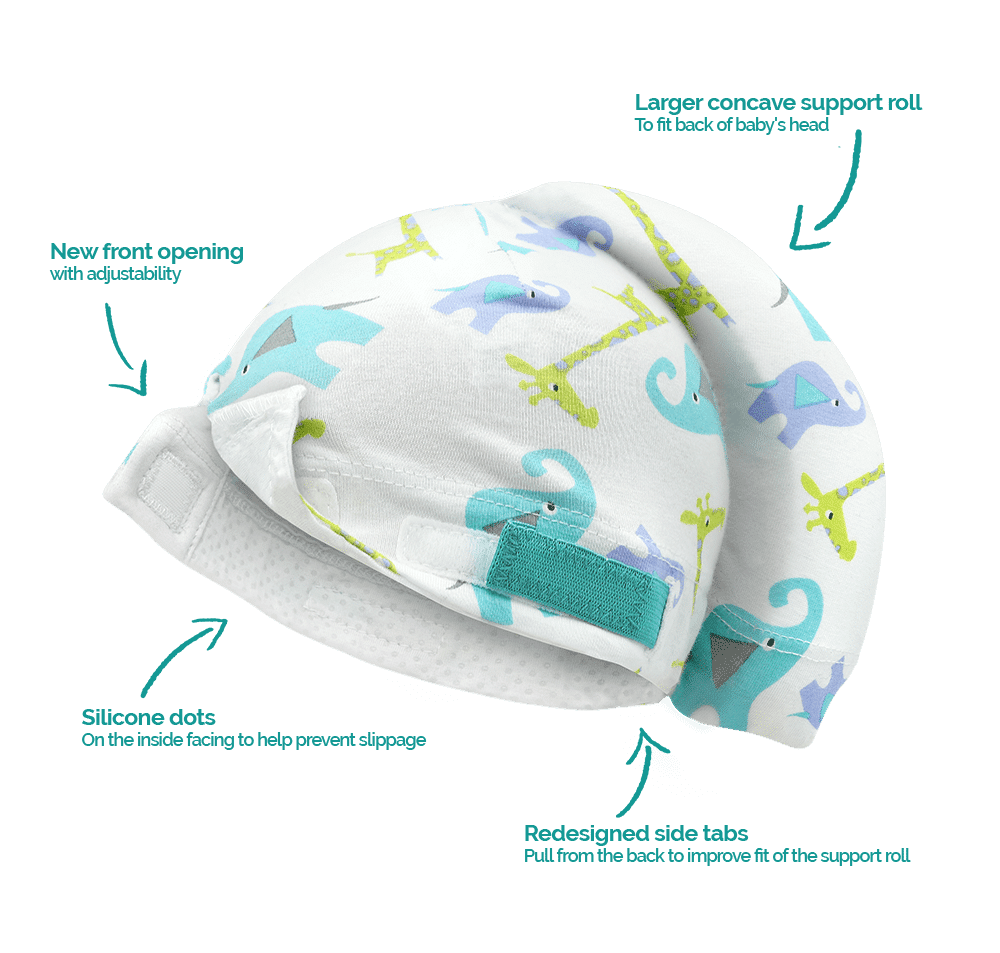Written By: Kallie Atti, PT, DPT
What is repositioning?
Repositioning is a tool we use as early intervention for children with torticollis. There are many different ways to reposition varying from how you hold your baby to how you change your baby’s diaper. For starters, it is important to recognize a consistency in your baby’s neck position. Watch your baby over a series of days to see if there is a preferred position no matter how you are holding them or what position they are in. For babies 0-3 months, what we call “neurological tone” has not kicked in yet so you may have a difficult time feeling the “tightness” of the specific sternocleidomastoid muscle that results in torticollis. All you may see in this age group is a preferred rotation.
What should I do?
It is important that once you pick up on a preferred pattern in your baby, that you begin repositioning. A hard and fast rule is to avoid having your baby lay in the same position for any prolonged period of time. For example, if they are only looking to the right, begin playing with them on the left side of their body. You can give them kisses on their left cheek, block their vision on the right, and make eye contact with them to eventually guide them over to their left.

In those first 0-3 months, it may be difficult to do tummy time, but tummy time can be done by putting your baby on your chest to give them more of an incline to lift their head and rotate it from side to side. If they are only looking in one direction, block their vision until they are able to achieve midline and keep your hand there to not allow them to go back to the preferred side. If they are napping or sleeping, you can gently rotate their head to the opposite direction to get a stretch. Try to do this more during their day naps.
“A lot of parents tell me they try to go in and repeatedly reposition their child’s heads at night; however, I encourage you to do most of this repositioning during the day and let night time be for all of you to get your rest!“
On the changing table, position yourself to the opposite side of their rotation preference to encourage them to want to find you and move their neck the opposite way. You can also place rattles, siblings, pets, or music on the side they avoid looking to in order to draw their attention to that side.
In the car seat, you can try taking a rolled up burp cloth and prop it along the side of their head in order to prevent that end range preferred rotation. If it is the tilt that is more pronounced, you can take a rolled up burp cloth and place it between the ear and the shoulder on the tilted side to increase the amount of space between. You can also try doubling up on the car seat shoulder pad on the tilted side to decrease the tilt.

Most of us have a preferred side we like to hold our babies on or a hand dominance so we may find ourselves contributing to their preferred torticollis pattern. Just having an awareness of our own preferences will help us see if we are contributing to theirs as well. Make sure you hold the baby on both sides while feeding! For breastfeeding mothers, feed your baby on both breasts. If bottle feeding, make sure you are switching sides and hold the bottle to their non preferred side. You can alternate the positions in which you hold your baby whether it be belly to belly on your chest, your shoulder, or sideways in your arms.
A carrier is a wonderful tool to get babies off the back of their heads; however, it is important to note that using a baby carrier without good head support should be avoided until a baby develops good head control around 2-3 months.
“It’s ok to hold your baby! Avoid car seats, swings, bouncers and positioning devices as much as possible. These frequently contribute to prolonged positioning leading to increased sternocleidomastoid muscle tightness and head flattening.“
Helpful Positioning Devices for Torticollis
Thankfully, Torticollis is very common and many positioning devices have been developed. However, a lot of these positioners can be household items you probably already have as part of having a brand new baby.
A burp cloth, a receiving blanket, a boppy are all things we can use to reposition our baby. Easy changes include rotating the side you hold your baby on, standing on the side of the changing table you are trying to encourage your baby to look towards, and place toys overhead on the car seat to the side you want your baby to look too. You can see below as examples of ways we can use these household items for repositioning.
Boppy Noggin Nest

For babies specifically 0-4 months old who may also be developing Plagiocephaly (flattening on one side of the head from preferred rotation) or Brachycephaly (flattening across the entire back of the head), there is a device known as the noggin nest which can be very helpful in decreasing the amount of pressure on the back of your baby’s head. There are many different brands but essentially it is a positioning device that has an opening in the back of the pillow to allow your baby to lay on their head when positioned on their back. Although this is a very helpful device, it does not beat keeping babies out of equipment like swings and bouncers.
Safety concerns: The noggin nest should NOT be used on top of an already protective head piece in the car seat because this can flex the babies heads forward too much. You should take the protective head piece out first and replace with the noggin nest when going on a walk. When driving, please use the head piece for safety.
The noggin nest should also NEVER be used at night for sleep. It is ONLY to be used when you are monitoring your baby.

Tortle
If your baby is recommended to use a doc band or helmet, the noggin nest will no longer be needed and since it is best to receive a helmet close to the 4-5 month mark, this is why the noggin nest is not recommended past this point. You will also no longer use the noggin nest once your baby begins to move around in their crib/bassinet. Once they begin pushing backwards with their legs or rolling, the noggin nest will not be useful and can be hazardous.
A tortle is a newer piece of equipment that you may find works for your baby. This is a type of beanie with a support attached that allows you to prop your baby’s head up and/or discourage your baby from turning into their preferred rotation. . This beanie is for babies 1-6 months old. The cons to this positioner are that the fit isn’t perfect and it will frequently slide around on the babies head. I have had mixed results with this device but it’s an option to try! It should be noted that no device is perfect and it will require monitoring at all times.
TOT Collar

Sometimes in therapy, we may decide professionally that a baby may benefit from a device known as the TOT collar. This is a tubing with pedestals that we as professionals cut to fit specifically for your baby to wear around their neck to assist in keeping their head in midline through play. It is typically not a go to initially for therapy. We will use this device if we are not seeing traditional physical therapy work as quickly as we would like or if we are treating an older baby with Torticollis.


0 Comments